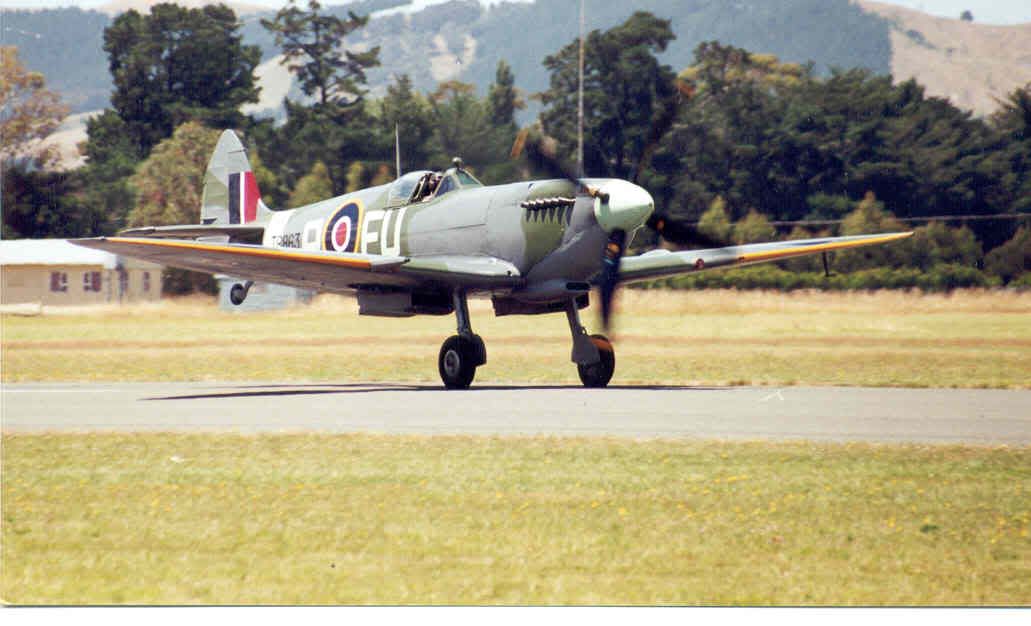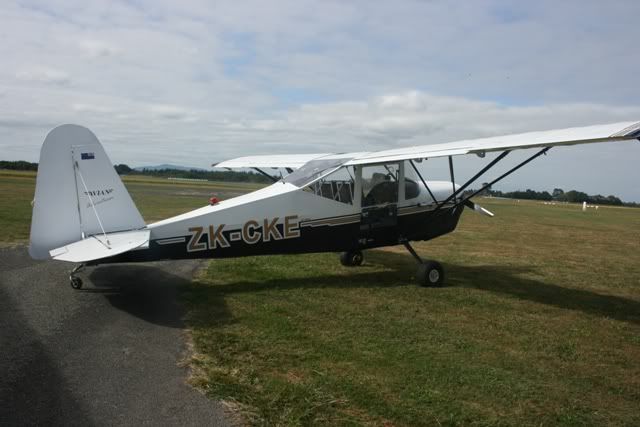|
|
Post by Dave Homewood on Dec 28, 2006 13:50:04 GMT 12
A twin engined plane (looks like a Britten Norman Islander?) has crashed into mudflats at Omokoroa near Tauranga. There's a photo at Stuff.co From www.stuff.co.nz/3912715a10.htmlPlane crashes near Tauranga NZPA | Thursday, 28 December 2006 A man who watched a light aircraft crash land on mudflats near Tauranga this morning said the pilot did an "amazing job" to bring the plane down and walk away unscathed. A plane piloted by Paul Ensor of Island Air Charters crashed into Omokoroa harbour, north-west of Tauranga this morning. Mr Ensor was not injured. Mel Donovan was weeding on his son's property when he heard a plane coming in "spluttering and carrying on". "It came virtually over the house, losing power. At first I thought it was a training exercise – cutting motors and starting them again – but then it continued and I realised it was in trouble." The plane made it over the next ridge and Mr Donovan thought it was going to attempt a landing in the playground of a nearby school. He then saw it come around a bluff, steeply banking before coming down in the harbour and digging in on one side. Mr Donovan's wife immediately rang emergency services. The couple were relieved to look through their telescope and see Mr Ensor get out of the plane. "I think the pilot did an amazing job, just watching him bring it in like that, that it didn't go tail to nose and flip," Mr Donovan said. "But he was very lucky, he no doubt saw the power lines not too far ahead of him, he did a great job. "I was holding my breath for quite a while, I can tell you." Senior Sergeant Stu Graham of Tauranga police said the matter would be referred to the Civil Aviation Authority. _______________ More links here www.radionz.co.nz/news/latest/200612281359/crashed_plane_threatened_by_rising_tide_in_estuarywww.newstalkzb.co.nz/newsdetail1.asp?storyID=109871 |
|
|
|
Post by Dave Homewood on Dec 28, 2006 17:07:48 GMT 12
Well done to pilot Paul Ensor who's skilful flying saw his passengers and himself get down safely. What a shame the Islander is stuck in the tide now.
|
|
|
|
Post by flyjoe180 on Dec 28, 2006 18:37:16 GMT 12
Apparently he was alone in the aircraft, and the Islander is now, well, an island as it is floating on empty drums in the tide.
|
|
|
|
Post by Radialicious on Dec 29, 2006 10:03:09 GMT 12
Hmmmm, another light-twin with a double engine failure........... The good old O-540 doesn't have a double flame out very often. I wonder if he was on his way to get gas, it sounds like he may have needed some. A fletcher parachute pilot at Wanaka a few years back was praised for his 'copybook' forced landing after his engine failed. His immaculate forced landing might not have been needed if he had kept gas in his tanks too.  |
|
|
|
Post by Radialicious on Dec 29, 2006 10:32:41 GMT 12
It is interesting to note that on the photo that stuff.co.nz provided, he came very very close to parking it completely undamaged. The surface behind the aircraft is firm enough to support a man in bare feet and the tire tracks have held their shape. It is clear where the nosewheel touched down and how quickly she stopped after that. The nature of the mudflats forward of that is clearly a bit different and she quickly got bogged. I'm not a betting man but I suspect if she hadn't sunk down past her axles, and if there was enough flat ground and time available, a splash of fuel in the tanks might have got her out again. An empty BN2 has astonishing short field performance. Vy, Vx and Vyse are all 65 kts and Vxse is 61kts at MAUW (6600lb/2994kg). An empty one needs a hell of a lot less! On a soft and/or wet surface, you only need to get her moving and with a wee bit of weight in the back, full aft stick, get that nosewheel off and she is guaranteed to fly. Anyway that is enough from this armchair expert and his imagination. Guess we'll see what the CAA comes up with. www.stuff.co.nz/3912870a10.html |
|
|
|
Post by phil82 on Dec 29, 2006 11:57:57 GMT 12
An engine failure is a singularly rare event. An engine failure on a twin is equally as rare, but both engines on a twin?
You've got no fuel!
|
|
|
|
Post by Dave Homewood on Dec 29, 2006 12:15:20 GMT 12
Apparently according to the 12.00pm news on National Radio today it was about to be/has been lifted out by helicopter and flown to Hamilton! Now that would make a great series of photos.
|
|
|
|
Post by Bruce on Dec 29, 2006 14:36:19 GMT 12
I saw a Great Barrier Airlines Islander carted back to Ardmore by helicopter after an accident on Great Barrier Island in the 1990s. the aircraft was stripped of a lot of its interior fittings, engines, tailplane etc and came back under Marine Helicopters heavylift Llama. A Hughes 300 escorted it back, with a photographer onboard taking pictures. the rest of the bits were stuffed into another Islander and flown back - one suspects that this second aircraft was slightly overweight!
Since that time there are now some larger heavy lift helicopters around, such as the Vertol or the Mil12s at Taupo, so this latest Islander may be able to get back in one piece.
I too have thoughts about double engine failures in twins....
|
|
|
|
Post by Dave Homewood on Dec 29, 2006 16:13:39 GMT 12
Lets not speculate on the cause, please wait and see what the experts determine. A lack of fuel is not the only possibility, it could be a fuel system malfunction, poor fuel quality or contamination, or any number of other causes.
After all a BA 747 lost all four engines in flight once, and it had nothing to do with lack of fuel - they had ingested ash from a volcano into the air intakes. Not that I'm suggesting it as a cause here, just an example.
|
|
|
|
Post by amitch on Dec 29, 2006 16:31:11 GMT 12
May not need to. Just put of Stuff
BREAKING NEWS: A pilot who crash-landed his nine-seater plane on mudflats near Tauranga has been banned from flying.
His company is also in trouble amid revelations authorities grounded it last month and have now done so again.
Paul Ensor, 40, alone in the Britten-Norman Islander, walked away scot-free yesterday after he was forced to bring the aircraft down in Te Puna estuary near Tauranga, after aborting a flight to Hamilton.
Initially praised by witnesses for landing the plane safely, Mr Ensor has now had his licence suspended by Civil Aviation Authority (CAA) director Russell Kilvington.
Mr Kilvington has also grounded Mr Ensor's company Island Air Charter for 10 working days.
In further bad news for the company, its new chief executive and maintenance controller – appointed just last month to allay CAA concerns – quit in the wake of yesterday's incident.
CAA spokesman Bill Sommer said Island Air Charter previously had its operating certificate suspended briefly in November and last week performed two "precautionary landings".
The Bay of Plenty Times today reported one of those, when Mr Ensor was also at the controls, was on December 22 at Waihi.
Another pilot made a landing on Boxing Day off Great Barrier Island.
Mr Sommer said CAA had grounded Air Island Charter's last month over maintenance concerns.
"They took some action to replace personnel and put in place new personnel to make sure the maintenance was going to be carried out correctly."
With yesterday's resignations, Mr Kilvington had again suspended the operating certificate.
Mr Ensor was also under investigation, Mr Sommer said.
"We were concerned with allegations that have been made about him and carrying out unauthorised maintenance on aircraft."
An Island Air Charter spokesman was yesterday abusive when contacted by NZPA, refusing comment and declining to pass any message on to Mr Ensor.
Another spokesman, the company's second in command Paul Sanson, later phoned to apologise but declined to talk about the crash landing.
"Nothing can be said – it's illegal for us to disclose any information because we weren't there at the scene anyway."
The company's website says its four pilots have a combined 25 years of experience, and its three planes are available for flights around the Bay of Plenty, Coromandel and islands.
Mr Ensor told the Bay of Plenty Times his 17-year flying career had been trouble-free until yesterday.
"Every time you take off and land you think about engine failure.
"It is part of your checks and is a continuation of what you do. I was a little worried at the area I had to deal with. It was the final option.
"Once it was obvious what was happening I tightened my seatbelt and had a good landing."
The plane stuck fast in the mud and was kept afloat overnight by drums secured by Tauranga firefighters.
Mr Sommer said the plane had today been removed from the mudflat by a large Russian-built Mil-8 helicopter.
"It wasn't deeply embedded in the mud – they managed to put some strops on it and they pulled it out of the estuary at the first attempt."
It had been taken to Hamilton where CAA inspectors would de-contaminate it and then try to determine what caused the engines to cut out.
As the wings and engines were relatively high on the plane, salt water would not have reached areas critical to the CAA investigation.
The plane was worth about $250,000.
|
|










